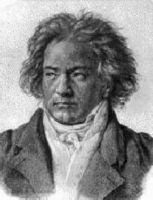New and Once New Share CSO Program
Mary Ellyn Hutton
Posted: Mar 28, 2009 - 9:20:13 AM in
reviews_2009
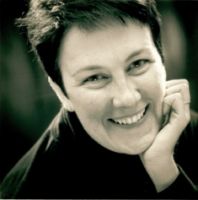
Jennifer Higdon
|
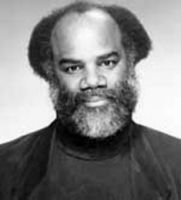
Jeffrey Mumford
|
Beethoven got some competition March 27 at Music Hall in Cincinnati with the pairing of his Fifth Symphony and two works new to the CSO audience: Jeffrey Mumford's "...and symphonies of deepening light...expanding...ever cavernous" (a world premiere) and Jennifer Higdon's 2005 Percussion Concerto (a CSO premiere).
The hope in enlisting the Bonn master was to buttress box office appeal. Pre-concert advertising focused exclusively on Beethoven (and on TV, the Fifth Symphony's iconic four-note motto), but it was a tack that worked, and the Friday night audience was larger than usual.
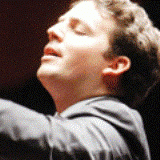
James Gaffigan
|
Guest conductor was James Gaffigan, associate conductor of the San Francisco Symphony.
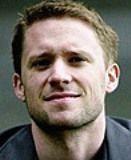
Colin Currie
|
Guest artist was the dynamic Scottish percussionist Colin Currie, who, aided by Higdon’s brilliant score, stole the show from just about everybody.
What better than a percussion concerto to extend throughout over-sized Music Hall and involve the far flung audience with its captivating sonic and visual display? Currie's battery of instruments lined the front of stage, greeting people -- including a gratifying mix of young and old -- as they took their seats.
Those who came early got a preview by Currie, who joined CSO assistant conductor Vince Lee in a pre-concert "Classical Conversation" "illustrated" by a hands-on demonstration of the percussion instruments.
Mumford, whose use of "cavernous" in the title of his work hit the nail on the head -- Music Hall is indeed cavernous -- joined Lee also for some introductory remarks.
(A feature of all but the Thursday evening "buffet" concerts, "Classical Conversations" should become a part of the experience for every CSO concertgoer. They begin an hour before the performance in the Music Hall auditorium. Tonight's is at 7 p.m.)
Commissioned by Cincinnatians Ann and Harry Santen in honor of their 50th wedding anniversary, Mumford's 12-minute work is scored for large orchestra, including quadruple flutes, oboes and clarinets, and an important part for piano. It is atonal and complex, both rhythmically and harmonically, but manages not to sound like it. There is plenty to please the ear, and there were moments that sounded almost romantic.
However, it is important to listen to it more as an experience in shifting timbres and to take Mumford's title as a cue. No explicit program is intended, but there is a feeling of colors and shapes criss-crossing each other in a kind of dawn-to-dusk journey. You might call it Claude Debussy meets Elliott Carter (with whom Mumford studied).
It began on a solidly grounded bass note (E-flat) over which silvery sounds emerged with a dew-like freshness couched in almost dance-like rhythms. Michael Chertock's skillful piano gave it added radiance.
Colors grew brassier after that, taking on a noonday brightness broken by wispy woodwinds and high-lying violin solos by concertmaster Timothy Lees and associate concertmaster Rebecca Culnan. Mumford's reference to clouds in his program note seemed aptly fulfilled here, as it did later in passages of rapid string pizzicato, like clouds rushing across the sky.
What sounded like a great big leading chord in the middle was followed by a blending and consolidation of the sound (string trills, etc.), then a gradual thinning and fadeout to a final soft note by the piano. Response to the work was bewildered, but also warm, as Mumford took a solo bow.
The charismatic Currie, 32, for whom Higdon wrote her concerto, took the stage next. He worked two sets of instruments, pitched ones on the right -- marimba, vibraphone, crotales (small antique cymbals) -- unpitched on the left -- drums and a special, ear-tickling array comprising temple blocks, wood blocks (ever hear a piccolo wood block?), brake drum, Chinese gong and cow bell.
The single-movement work began with Currie alone on marimba, joined gradually by his colleagues in the CSO percussion section, David Fishlock, Richard Jensen, William Platt, and timpanist Patrick Schleker. (Indeed, one of the joys of this joyful work was the prominence given to percussion in general and the CSO percussionists' interaction with Currie.)
Philadelphia native Higdon's music is very American-sounding, from its easily processed four-note theme to its jazzy, Bernsteinian rhythms. And how it ravishes the ear, never more so than in the slow mid-section which begins with the ethereal sound of a bow drawn across the frame of Currie's vibraphone. Soon the air shimmered with bowed resonances as the CSO percussionists followed suit drawing bows across their instruments. The CSO strings, muted, played along the old-fashioned way.
There was a gorgeous moment, also a spectacular one, where Currie played vibraphone and crotales simultaneously. He got to rest during a long, colorful orchestral tutti, but his exertions were massively displayed in the final section of the concerto. Here he climaxed a cadenza, in which he was joined by his CSO colleagues, with a spectacular solo improvisation on drums, firing rim shots like pistol shots and generally working the crowd into a frenzy. Currie was back again on vibes and then drums at the end, which he and the CSO topped off with an exuberant flourish.
Beethoven would have been proud of his 21st-century colleagues Mumford and Higdon, since his own work was new music once and controversial at that. Gaffigan, a young conductor to watch with impressive credentials including first prize in the 2004 Georg Solti International Conducting Competition in Frankfurt, gave it an uncontroversial reading, handsome, cleanly articulated and very well received by the audience.
The orchestra strings were trimmed back slightly, but there was no attempt to give it a period performance with the brisk tempos and vibrato-less sound now commonly heard. Gaffigan cut a strong, energetic figure on the podium as he led the familiar work. There was plenty of intensity in the opening movement, which, when followed by applause, prompted a comment by Gaffigan, "and there's more, too," which further endeared him to his listeners.
Dynamic control was notable in the stately slow movement, as was precision in the third, where he built the ghostly transition into the finale to telling effect.
Beethoven's triumphant finale lifted the audience from their seats and moved Gaffigan into the ranks of the orchestra where he shook hands with all the principal players.
Following the concert was the CSO's second "Meet and Greet" event in the Music Hall foyer, where members of the orchestra -- this week the violas, oboes and clarinets -- gathered to mingle with concertgoers and as CSO violist Robert Howes stated in remarks from the stage after intermission, help overcome the lack of intimacy at Music Hall.
Repeat is 8 p.m. tonight at Music Hall.



